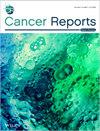Immune Reconstitution and Need for Booster Vaccinations Among Non-Transplant Childhood Cancer Survivors: A Single-Center Experience
Abstract
Background
Waning immunity from childhood vaccines can be more profound in pediatric patients following chemo/immunotherapy. Moreover, childhood cancer survivors (CCS) are at significantly increased risk for life-threatening infections. We implemented an institutional standard of practice (SOP) to assess immune reconstitution and provide recommendations for re-vaccination for non-transplant CCS.
Methods
A lymphocyte mitogen proliferation panel was obtained at around 6 months off therapy to assess non-specific lymphocyte proliferation to phytohemagglutinin (PHA), concanavalin A (Con A), and pokeweed mitogen (PWM). Serologic concentrations of immunoglobulin G (IgG) antibodies were measured for hepatitis B (hepB) virus, tetanus toxoid, and Streptococcus pneumoniae. Booster vaccines were recommended for seronegative patients. Catch-up vaccines were recommended for CCS not previously up to date.
Results
All evaluated patients were considered immune reconstituted at 6 months off therapy. Most patients (about 80%) were seronegative for hepB virus and S. pneumoniae, but nearly 100% retained immunity against tetanus. Most patients had positive seroconversion with a single booster vaccination with hepB (86%) and PPSV23 (76%). There were missed opportunities with each step of the institutional SOP due to provider omission with varying degrees depending on the provider.
Conclusions
This study suggests that most CCS are ready for re-immunization with inactivated vaccines by 6 months of therapy and underscores the need for boosters to optimize protection against vaccine-preventable infections. Future studies are needed to inform consensus guidelines adapted to patient age, underlying cancer diagnosis, and treatment intensity.


 求助内容:
求助内容: 应助结果提醒方式:
应助结果提醒方式:


